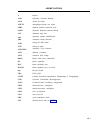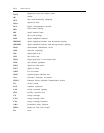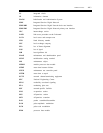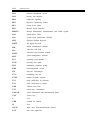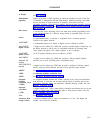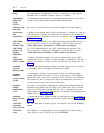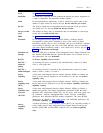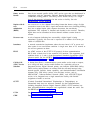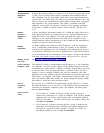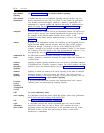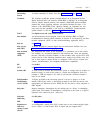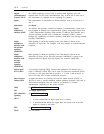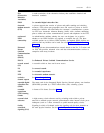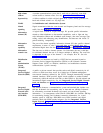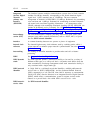
GLOSSARY
GL-5
channel-division
multiplexer
(CDM)
channel-
expansion
multiplexer
(CEM)
channel
negotiation
channel service
unit (CSU)
circuit-switched
transport mode
class of
restriction
(COR)
class of service
(COS)
A device that connects directly to a System 75 or a System 85 digital signal level
1 (DS1) port to provide point-to-point or multipoint nonswitched private-line
data connections over the same digital facility that carries intercommunications
system traffic. The CDM allows any number of preselected channels from a DS1
facility to bypass the communications system and/or terminate while passing the
other channels to the system normally. The CDM is compatible with both
robbed-bit (voice-grade) and alternate voice/data (AVD) signaling techniques,
and provides a number of interface options, such as RS-232C, RS-449, and
V.35.
A device that doubles the channel capacity of a 1.544M bps digital signal level 1
(DS1) private-line facility by compressing up to 48 voice-band channels onto a
single DS1 facility. Only 64K-bps voice, and voice-band data signals of up to
4.8K-bps, can be compressed; however, the CEM can be configured to pass
selected 64K-bps channels uncompressed so that compressed and uncompressed
channels can share the same DS1 facility.
An ISDN capability that determines which B-channel is used for completing a
call to a terminating communications system. For example, if the B-channel
selected by the originating end is not acceptable to the terminating end (such as
an inconsistency between the two ends or preplanned use of the selected channel
by the terminating end), the terminating end can request a change in the channel
to be used. Also called exclusive-channel request and preferred-call reference.
See network channel-terminating equipment.
The condition in which a communications channel appears as a wire connecting
two endpoints. For each call that requests circuit-switched transport mode, the
communications system provides a 56K-bps or 64K-bps channel that can be used
to transmit either voice, non-packetized data, or packetized data. The Q.931
protocol is used to establish, maintain, and clear the connection. Each data
application may have additional protocol requirements for providing end-to-end
data transfer. For example, both Digital Communications Protocol (DCP) and
basic rate interface (BRI) data modules use digital multiplexed interface (DMI)
data modes to control the end-to-end data transfer.
On a System 75 or DEFTNITY
®
Communications System Generic 1, a feature
that allows definition of up to 64 classes of call-origination and call-termination
restrictions for telephones, telephone groups, data modules, and trunk groups.
See also class of service.
1.
On a System 75, a number (0 through 15) that specifies a group of
feature-access permissions of a group of telephones. COS specifies whether
telephone users can activate certain features such as Automatic Callback
and Call Forwarding — All Calls, Data Privacy, and Priority Calling. See
also class of restriction.
2.
On a System 85, a numeric code that specifies a group of feature-access
permissions and calling-privilege restrictions that together determine the
privileges of a group of extension numbers. As many as 63 COSs are
provided by System 85. See also class of restriction.



